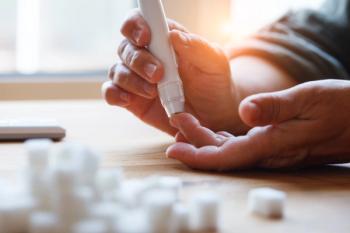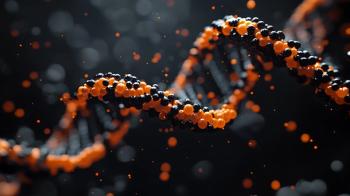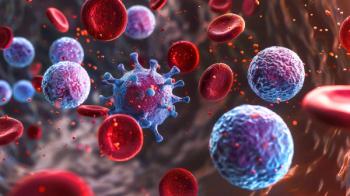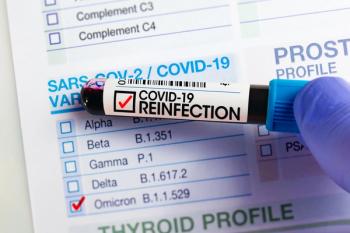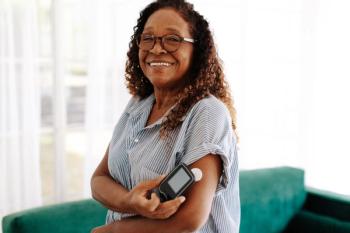
- October 2023
- Volume 89
- Issue 10
Counsel Patients, Parents on the HPV Vaccine
Understanding the recommended ages for vaccination is crucial to properly advise patients and parents who have questions
Human papillomavirus (HPV) is the most common sexually transmitted infection in the United States. It causes a range of conditions in men and women, including precancerous lesions that may progress to cancer. As many as 43 million infections were reported in 2018, with many affected individuals in their late teens and early 20s.1 In both men and women, HPV infections are associated with cancers of the head, neck, oropharynx, and anogenital areas as well as anogenital warts and respiratory papillomatosis.1-3
Cervical cancer is the most common HPV-related cancer globally and the second most common cause of death from cancer among women worldwide, and it affects more than 13,000 American women every year.3-5 The number of cervical cancer cases has decreased drastically as a result of screening and vaccination efforts, and oropharyngeal cancer is now the most common HPV-associated cancer in the United States.5,6
In 2006, the HPV vaccine was developed for those aged 9 to 25 years to protect against infection from the types of HPV known to cause cancer. There are now 3 HPV vaccines available worldwide and 1 available in the United States.1,4 Since the development of the vaccine, infections with HPV types that cause most HPV cancers and genital warts have dropped 88% among teenaged girls and 81% among young adult women.5-7
HPV AND THE HPV VACCINE
More than 100 forms of HPV have been identified, and HPV types are categorized as being either high risk or low risk based on their oncogenic potential.3,4,8 The majority of HPV infections are asymptomatic and resolve on their own, although persistent infection may result in disease. In women, persistent infection with oncogenic HPV types may progress to invasive cervical cancer. Of the different types of HPV, more than 40 are known to infect the cervix and approximately 15 cause cervical cancer.3,8 The high-risk HPV genotypes 16 and 18 cause approximately 70% of all cervical cancers worldwide, while HPV types 6 and 11 cause nearly all cases of anogenital warts.3,7,8 Other high-risk types defined based on their oncogenic potential can cause cancer of the cervix, vulva, vagina, penis, anus, and oropharynx.3,7,8
The HPV 9-valent vaccine (Gardasil 9) targets HPV types 6, 11, 16, 18, 31, 33, 45, 52, and 58, and it is specifically approved to prevent initial HPV infection and subsequent HPV-associated lesions for the prevention of cervical, vulvar, vaginal, anal, oropharyngeal, and other head and neck cancers; anogenital precancerous and dysplastic lesions; and genital warts in female individuals, as well as for the prevention of anal, oropharyngeal, and other head and neck cancers; anal precancerous and dysplastic lesions; and genital warts in male individuals.7,9
WHO SHOULD RECEIVE THE VACCINE
The HPV 9-valent vaccine is available in the United States and recommended by the CDC’s Advisory Committee on Immunization Practices (ACIP). Two doses are recommended for adolescents who begin the series before 15 years of age and 3 doses are recommended for those who begin the series after age 15.1,9,10
The ACIP recommends routine HPV vaccination for all female and male individuals in the following age ranges9-11:
- Routine vaccination is recommended at 11 to 12 years of age, although it can be administered starting at 9 years of age.
- Catch-up vaccination is recommended for adolescents and adults aged 13 to 26 years who have not been previously vaccinated or who have not completed the vaccine series.
- For adults 27 years and older, catch-up vaccination is not routinely recommended and should be made on an individual basis.
Clinical trial efficacy in male and female individuals suggests that immunization with the HPV vaccine is most effective among individuals who have not been infected with HPV.
The immunization schedule is as follows10,11:
- Individuals initiating the vaccine series at 9 to 14 years of age should be given 2 doses of HPV vaccine at 0 and 6 to 12 months.
- Individuals initiating the vaccine series at 15 years of age or older should receive 3 doses of HPV vaccine at 0, 1 to 2, and 6 months.
- Immunocompromised patients should receive 3 doses of HPV vaccine at 0, 1 to 2, and 6 months, regardless of age.
SAFETY
All HPV vaccines have documented safety in large clinical trials and extensive postlicensure data with over 500 million doses administered through 2020.12 The vaccines use virus like particles that mimic the viral capsid, do not contain genetic material, and are produced in biologic systems that have established safety records.12
In an analysis of 7 trials with more than 15,000 individuals in which each person received at least 1 dose of the 9-valent vaccine, the most common adverse effects were mild or moderate injection site reactions. These reactions included pain, redness, and swelling.11,12 The frequency of systemic adverse effects such as headache, fever, nausea, dizziness, and syncope was similar to that of the quadrivalent vaccine, and adverse events were generally mild and self-limiting.6,9,11,12 Serious adverse effects such as anaphylaxis occurred in < 0.1% of participants.6,11,13
The HPV vaccine should not be given to anyone who experienced a severe reaction after a previous HPV vaccine dose. With all of the growing safety data, the World Health Organization's Global Advisory Committee on Vaccine Safety has stated that the benefit-risk profile remains favorable.6
PHARMACISTS’ ROLE
Research shows that health care professionals are parents’ most trusted source of information about the HPV vaccine. The CDC recommends that health care professionals recommend the HPV vaccine in the same way and on the same day that they recommend other vaccines.1,13 Although experts do not know the exact duration of protection against HPV after immunization, there is no evidence to suggest that the HPV vaccine loses protection over time. Vaccination is very effective at preventing HPV infection in both male and female individuals and at reducing the risk of genital warts. Pharmacists should work with health care providers to educate parents about the benefits, risks, and safety profile of the HPV vaccine.
About the Author
Joanna Lewis, PharmD, MBA, is the 340B compliance coordinator at Baptist Health in Jacksonville, Florida.
References
- Genital HPV infection - basic fact sheet. Centers for Disease Control and Prevention. Reviewed April 12, 2022. Accessed August 22, 2023. https://www.cdc.gov/std/hpv/stdfact-hpv.htm
- World Health Organization International Agency for Research on Cancer. IARC Monographs on the Evaluation of Carcinogenic Risks to Humans: . Vol.90. International Agency for Research on Cancer; 2007.
- de Martel C, Plummer M, Vignat J, Franceschi S. Worldwide burden of cancer attributable to HPV by site, country and HPV type. Int J Cancer. 2017;141(4):664-670. doi:10.1002/ijc.30716
- World Health Organization. Human papillomavirus vaccines: WHO position paper, December 2022. Weekly Epidemiological Record. 2022;50(97):645-672. Accessed September 7, 2023. https://www.who.int/publications/i/item/who-wer9750-645-672
- Lewis RM, Laprise JF, Gargano JW, et al. Estimated prevalence and incidence of disease-associated human papillomavirus types among 15- to 59-year-olds in the United States. Sex Transm Dis. 2021;48(4):273-277.doi:10.1097/OLQ.0000000000001356
- Rosenblum HG, Lewis RM, Gargano JW, Querec TD, Unger ER, Markowitz LE. Declines in prevalence of human papillomavirus vaccine-type infection among females after introduction of vaccine – United States, 2003-2018. MMWR Morb Mortal Wkly Rep. 2021;70(12):415-420. doi:10.15585//mmwr.mm7012a2
- Lowy DR, Schiller JT. Prophylactic human papillomavirus vaccines. J Clin Invest. 2006;116(5):1167-1173. doi:10.1172/JCI28607
- World Health Organization. Weekly Epidemiological Record. 2022;50(97):645-672.
- Markowitz LE, Dunne EF, Saraiya M, et al. Human papillomavirus vaccination:recommendations of the Advisory Committee on Immunization Practices (ACIP). MMWR Recomm Rep. 2014;63(RR-05):1-30. https://pubmed.ncbi.nlm.nih.gov/25167164/
- Murthy N, Wodi AP, McNally V, Cineas S, Ault K. Advisory Committee on Immunization Practices recommended immunization schedule for adults aged 19 years or older – United States, 2023. MMWR Morb Mortal Wkly Rep.2023;72(6):141-144. doi:10.15585/mmwr.mm7206a2
- Wheeler CM, Skinner SR, Del Rosario-Raymundo MR, et al. Efficacy, safety, and immunogenicity of the human papillomavirus 16/18 AS04-adjuvanted vaccine in women older than 25 years: 7-year follow-up of the phase 3, double-blind, randomised controlled VIVIANE study. Lancet Infect Dis.2016;16(10):1154-1168. doi:10.1016/S1473-3099(16)30120-7
- Henschke N, Bergman H, Villanueva G, et al. Effects of human papillomavirus (HPV) vaccination programmes on community rates of HPV-related disease and harms from vaccination. Cochrane Database Syst Rev. 2022;2022(5):CD015363. doi:10.1002/14651858.CD015363
- HPV vaccine safety and effectiveness data. Centers for Disease Control and Prevention. Reviewed November 1, 2021. Accessed September 7, 2023.https://www.cdc.gov/hpv/hcp/vaccine-safety-data.html
Articles in this issue
about 2 years ago
Interactive Case Studies: October 2023about 2 years ago
Condition State Management: Stroke Watchabout 2 years ago
Pharmacists Pet Peeves: October 2023about 2 years ago
Celebrate Pharmacists Who Are Trailblazers in MTMabout 2 years ago
Weight Loss: OTC Case Studiesabout 2 years ago
Generic Product News: October 2023about 2 years ago
RX Product News: October 2023about 2 years ago
The Medical Marijuana and Cannabidiol Research Expansion ActNewsletter
Stay informed on drug updates, treatment guidelines, and pharmacy practice trends—subscribe to Pharmacy Times for weekly clinical insights.

